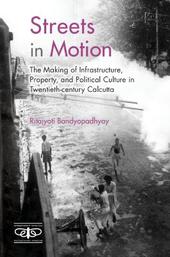
|
Streets in Motion: The Making of Infrastructure, Property, and Political Culture in Twentieth-century Calcutta
Hardback
Main Details
Description
The book studies the social production of motion in a capitalist urban context. In the city of capital, motion refers to a fetish. The bourgeois order posits motion as a metaphor for energy, positivity, and progress - a norm - and obstruction (motion's dialectical opposite) as delinquency. The book uncovers the social tectonics of spatial mobilization and thus demystifies motion. Who and what set spaces on the move? How did various classes of city dwellers activate, experience, and negotiate it? Streets in Motion develops an approach to urban history by theorizing and historicizing the 'street' as an apparatus of city-making and subject formation. It works at two registers - a local history of Calcutta in colonial and post-colonial periods, and a theorizing of the logistical and political-cultural centrality of the street within this rubric. It is argued that the street is politics in as much as politics is the production of space.
Author Biography
Ritajyoti Bandyopadhyay teaches History and Political Economy at the Indian Institute of Science Education and Research, Mohali. He is also a permanent module fellow of the M.S. Merian - R. Tagore International Centre of Advanced Studies 'Metamorphoses of the Political'. Currently, he is a guest professor at the Centre for Modern Indian Studies, Universitat Goettingen.
|